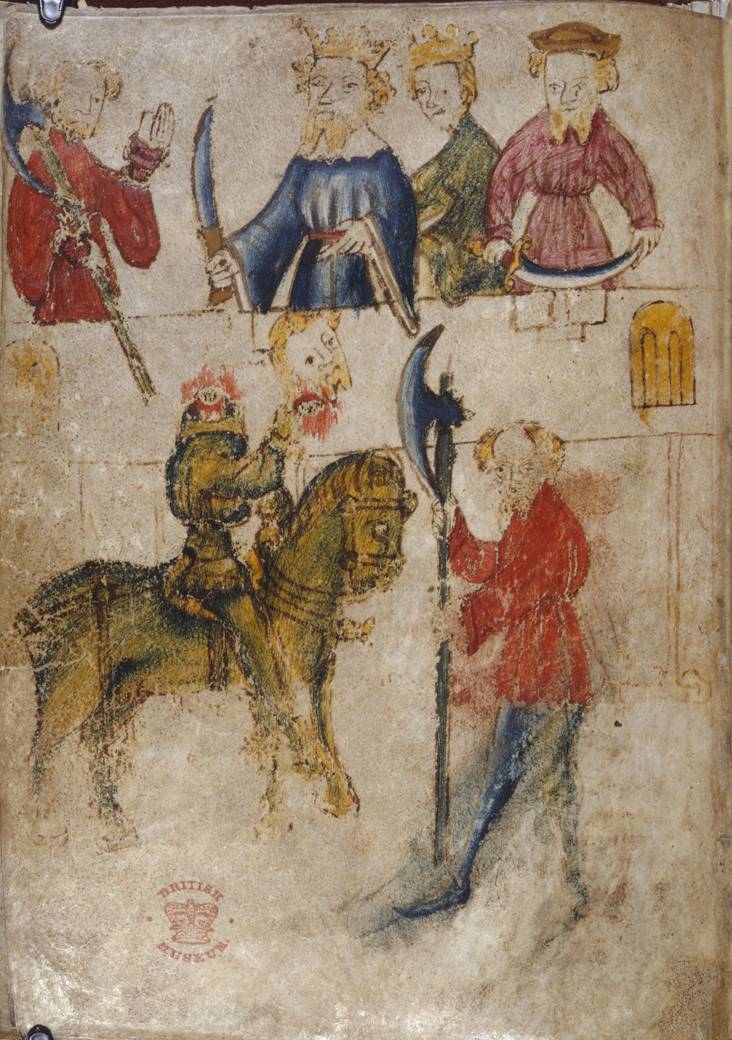Newsreel
There’s more to classics and medieval studies than field archaeology, though that’s what produces some of the best pictures, without a doubt. Still, there’s worlds of scholars who work with artifacts and ancient texts to better help us understand the stories of the ancient world. They translate manuscripts, write your textbooks, teach your classes, and advance the tradition in their own way. It’s as important to shine the spotlight on their work as it is those of field archaeologists, because it’s just as important, if not more. So today’s Newsreel is devoted to those scholars who help us understand the past as much as those who help us discover it.
Stormin’ Normans
A Companion & Guide to the Norman Conquest is a new book by Peter Bramley, an economist with a passion for the history of England. Author of the Companion & Guide to the War of the Roses as well, in his new book he takes a look at the conquest of England after the Battle of Hastings in 1066, detailing important figures and sites in the period, many of which survive today. Chiefly divided up into a regional guide that covers England, Wales, and Normandy, this book has a lot to offer for anyone exploring the history of Britain around the end of Anglo-Saxon rule. Read a review over at Medievalists.net.
The Green Knight Rises
 The University of Calgary, in conjunction with the British Library, has just put an amazing manuscript online, a full set of colour images of a 14th century copy of Sir Gawain and the Green Knight, as well as Pearl and two other poems. These are some of the seminal works of medieval literature, and are widely studied to this day. The manuscript itself, Cotton Nero A.x., is the only known manuscript containing the works of the Pearl poet, and is currently on display in the British Library’s writing exhibition until the end of September. Read more about this at the British Library, or on the manuscript project’s webpage. This link was submitted by Lillian Wheeler, a graduate student in the department.
The University of Calgary, in conjunction with the British Library, has just put an amazing manuscript online, a full set of colour images of a 14th century copy of Sir Gawain and the Green Knight, as well as Pearl and two other poems. These are some of the seminal works of medieval literature, and are widely studied to this day. The manuscript itself, Cotton Nero A.x., is the only known manuscript containing the works of the Pearl poet, and is currently on display in the British Library’s writing exhibition until the end of September. Read more about this at the British Library, or on the manuscript project’s webpage. This link was submitted by Lillian Wheeler, a graduate student in the department.
Eyes in the Sky
I couldn’t resist putting in one story about field archaeology, though. By observing satellite photos of North Downs in Kent, archaeologists were able to discover the earthworks of an ancient henge. A religious site dating back three thousand years, it’s some fifty metres across and not one part of it sticks above ground. Walking over it, you’d never know, but through the magic of satellite imagery, all things are possible. The dig has just begun, and they have found several different bones with tool marks on them, which may have been used as shovels. Watch the story on the BBC.
And that’s this week’s newsreel. It’s important to remember that some of the most important work in the discipline isn’t done in the dirt, but in the library, translating texts and commenting on the translations of others. This scholarship helps us get a better picture of the past, and helps us transmit it to people who aren’t classicists through things like guidebooks, so regular people can go and visit the sites and really understand their significance. Anyway, we’ll be back next week with more archaeology news and some information on advanced course offerings in the department. See you then!
Jim Tigwell is a freelance writer currently pursuing his Master’s degree in philosophy at the University of Waterloo, specializing in philosophy of social media, games, and professional ethics. He is the creator of Concept Crucible, a blog focusing on applying philosophy to everyday life. You can find him on Twitter as @ConceptCrucible, or on Steam.

Leave a Reply